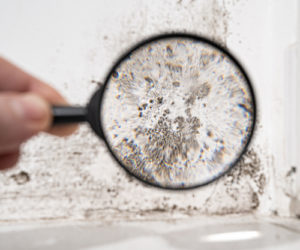Effective Post Mold Remediation Cleaning Protocols
Effective Post Mold Remediation Cleaning Protocols
Blog Article
Your Ultimate Overview to Message Mold And Mildew Remediation Techniques
Browsing the realm of post-mold removal strategies is a thorough procedure that requires attention to detail and a comprehensive understanding of the complexities involved. In the results of mold and mildew infestation, recognizing how to successfully eradicate the mold and mildew and avoid its reoccurrence is critical for keeping a healthy interior atmosphere. From picking the ideal cleansing and sanitizing techniques to executing strategies for long-lasting mold prevention, each action in the removal trip plays an essential role in ensuring a successful outcome. As we embark on this expedition of post-mold remediation techniques, we will certainly uncover the vital strategies and best techniques that can assist you recover your space to its pre-mold condition and safeguard it against future mold and mildew risks.
Recognizing Post-Mold Remediation Process
After finishing the mold remediation procedure, it is crucial to recognize the post-mold removal techniques that are required to make sure a comprehensive and reliable cleanup. As soon as the mold and mildew has been gotten rid of, the next action involves cleansing and sanitizing the influenced areas to stop any kind of regrowth of mold. This includes using specialized cleansing agents to clean down surface areas and kill any type of remaining mold and mildew spores. It is necessary to dry the area completely to inhibit the development of mold and mildew in the future (Post Mold Remediation). Proper air flow and dehumidification can aid in this process.
Moreover, conducting a last assessment post-remediation is important to make certain that all mold and mildew has been efficiently eradicated. If the inspection discloses any remaining mold and mildew, additional removal might be necessary.
Effective Cleansing and Sanitizing Techniques

Preventing Future Mold Growth

Significance of Appropriate Ventilation
Appropriate ventilation plays an important duty in protecting against dampness buildup, a crucial element in mold and mildew growth within indoor environments. Reliable air flow systems assist get rid of excess humidity from the air, lowering the chances of mold spores finding the moisture they require to spread out and sprout. Without ample air flow, interior spaces can come to be a breeding place for mold and mildew, causing possible health threats and structural damages.
By making certain proper air blood circulation, air flow systems can likewise assist in drying out moist locations more rapidly after water damages or flooding cases, even more discouraging mold growth. After mold remediation. In rooms like bathrooms, attic rooms, kitchens, and cellars where wetness degrees often tend to be greater, installing and maintaining efficient ventilation systems is important in stopping mold invasions

Monitoring and Upkeep Tips
Offered the vital duty that correct ventilation plays in stopping mold and mildew development, it is necessary to establish effective surveillance and maintenance suggestions to make certain the ongoing capability of ventilation systems. Normal assessments of ventilation systems need to be performed to check for any signs of clogs, leaks, or breakdowns that can hamper correct air movement. Tracking moisture degrees within the property is also important, as high humidity can contribute to mold development. Setting up a hygrometer can aid track moisture degrees and alert property owners to any type of spikes that may require interest. In addition, making certain that air filters are regularly cleansed or replaced is crucial for maintaining the effectiveness of the air flow system. Applying a schedule for routine upkeep tasks, such as air duct cleaning and cooling and heating system examinations, can help prevent issues before they rise. By staying conscientious and positive to the problem of air flow systems, residential or commercial property owners can successfully mitigate the danger of mold regrowth and preserve a healthy and balanced interior setting.
Final Thought
In final thought, post-mold removal methods are necessary for making sure a risk-free and clean atmosphere. Understanding the process, implementing efficient cleaning and decontaminating approaches, protecting against future mold growth, keeping correct air flow, and routine monitoring are all essential steps in the removal procedure. By adhering to these standards, you can successfully remove mold and mildew and stop its return, advertising a healthy and balanced living or working area for all passengers.
In the after-effects of mold and mildew invasion, knowing exactly how to successfully eradicate the mold and stop its reoccurrence is critical for maintaining a healthy indoor setting. When the mold has actually been gotten rid of, the next step involves cleansing and sanitizing the affected locations to protect against any regrowth of mold - Post remediation mold testing near me. After eliminating visible mold growth, it is important to clean all surfaces in the damaged area to remove any continuing to be mold spores. To better enhance mold prevention steps, it is essential to attend to underlying issues that initially led to mold and mildew growth.Given the vital role that correct ventilation plays in stopping mold and mildew growth, it is important to develop reliable surveillance and maintenance suggestions to make certain the ongoing performance of ventilation systems
Report this page